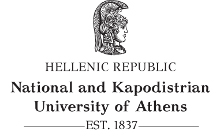Menu
- NEWS AND EVENTS
- THE PROGRAM
- ADMISSION
- MODULES
- ACADEMIC STAFF
- PROGRAM REGULATIONS
-
ACADEMIC FACILITIES
- LABORATORY OF ARCHAEOLOGY
- LABORATORY OF MINERALOGY AND PETROLOGY
- LABORATORY OF HISTORICAL GEOLOGY AND PALAEONTOLOGY
- LABORATORY OF GEOPHYSICS
- CORE FACILITY OF THE SCHOOL OF SCIENCE
- MUSEUM OF ARCHAEOLOGY AND ΗISTORY OF ART
- MUSEUM OF MINERALOGY AND PETROLOGY
- MUSEUM OF GEOLOGY AND PALAEONTOLOGY
- LIBRARY OF THE SCHOOL OF PHILOSOPHY
- LIBRARY OF THE SCHOOL OF SCIENCE
- STUDENTS
- RESEARCH
- CONTACT US
